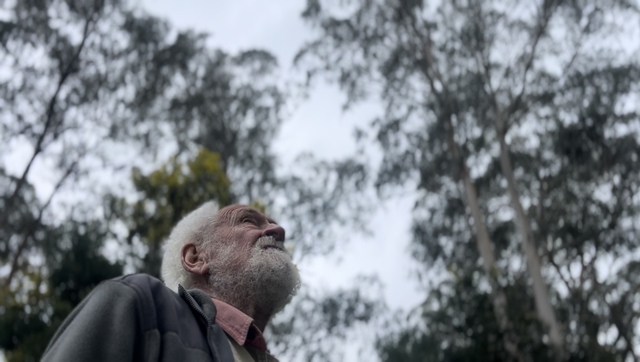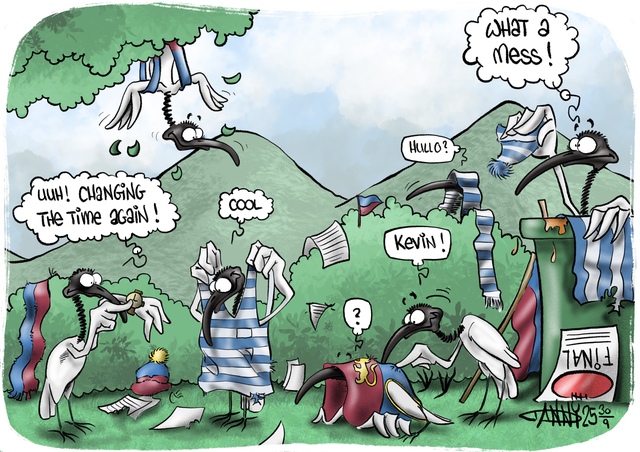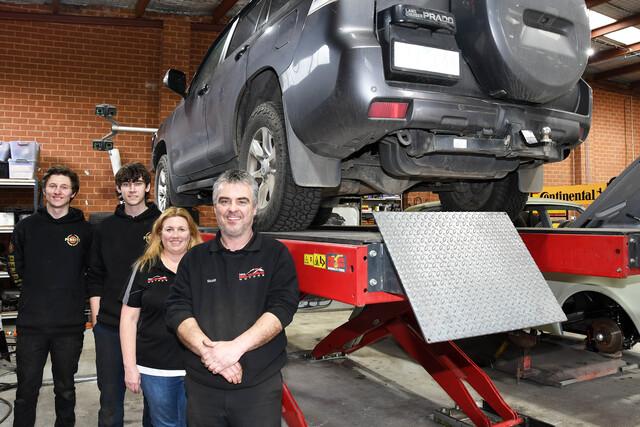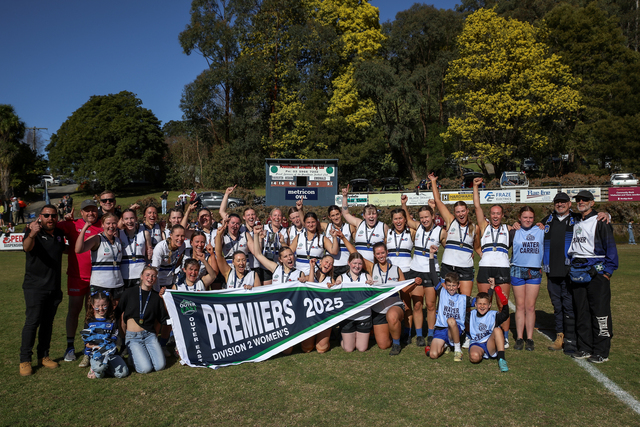On the topic of bushfire risk, research and emergency plans, the roles of governmental departments, councils and CFAs tend to appear front and centre.
The typical flashing lights and bright red trucks aren’t the only things that should be framed in the fight against fire.
In a region bespeckled with bracken and full of fuel, the communities of the Yarra Ranges are banding together behind the scenes to fortify the area against bushfires.
Across the Yarra Ranges, there are various fuel reduction, bushfire mitigation and emergency groups that cater specifically to the needs of their local areas. Fuelled by volunteers, these groups are situated in and look after the Healesville, Monbulk, Yarra Junction, Kalorama and Mount Dandenong areas.
The Healesville approach
The Healesville Community Emergency Group aims to increase bushfire knowledge and preparedness in the local community and was created in 2016 when the Department of Energy, Environment and Climate Action (DEECA) and local CFAs put together a workshop that accrued much public interest.
Holding public forums on house, garden and farm designs that would mitigate the harms of fire and conducting talks, trivia nights and breakfasts for community members, the Healesville Community Emergency Group began its work preparing the community for bushfire seasons.
Now, the group is working on developing an emergency hub and creating a bushfire mitigation plan.
Member of Healesville Community Emergency Group Graeme George said “Our plan is different to most community plans. Where most plans are focusing on fuel reduction using a zoning system, we feel that those management zones are too focused on protecting the town centres as safe places and it leaves rural assets unprotected.”
“Our plan is a whole landscape plan, because there are other things you can do to minimise bushfire risks than just reducing fuel, which can be counterproductive,” Mr George said.
“Our emphasis is on measures that can minimise the risk of a fire starting, slow its spread, and reduce its intensity, knowing that weather and terrain are equally important factors to take into account.”
The plan covers the postcode 3777 and aims to encourage individual and cooperative actions by landowners and managers to reduce the severity of the impacts of bushfire on the communities of Healesville and its surrounds, and is based on the latest science on bushfire behaviour in the Yarra Ranges.
Recommending a tripartite approach to the mitigation of impacts from fire, including fuel reduction, the protection of forests that are regenerating and landscape modifications that slow wind speeds, provide heat shields and trap embers to protect assets.
“We live in a very fire-prone environment, but our problem now with climate change is that fires are more frequent, they’re more intense, and in combination with past logging practices and prescription burning, there’s too much fire in the landscape and it’s doing too much long-term damage to ecosystem resilience,” Mr George said.
“Studies show that removing fuel through prescription burning, well away from assets, has almost no effect on whether that asset survives a fire.
“The critical amount of fuel is the fuel within 100 metres of an asset. Houses are most likely to burn down if there’s fuel within 100 metres of them.”
Finding that the risk of fast-moving fires on open farming landscapes where original tree covers have been removed has been overlooked, the Healesville Community Emergency Group’s Bushfire Mitigation Plan recommends the installation of wind breaks on open landscapes.
Situated away from assets, these windbreaks can be formed from native vegetation and, along with slowing strong winds, can double as habitats for local wildlife.
Mr George said, “there’s shelter belts that can be designed with a slope to them so they can lift the wind over assets that you want to protect, such as livestock in a refuge paddock, or a house or other farm infrastructure.”
“The shelter belts need to be species that are less flammable than our native vegetation, which means moving away from the stringy barks, pine trees, conifers and tea trees, which can lift the fire into the canopy very quickly,” he said.
According to Mr George, keeping paddocks closely grazed is another action landowners can take to mitigate bushfire damage.
When it comes to bushfire preparedness and protection, Mr George insisted that the community is key.
“The government and the CFA’s approach to making communities safer is that community involvement is critical to getting good outcomes,” Mr George said.
“We can’t rely on agencies to do all the work for us. The community has to get behind it, they’ve got to support the agencies, and particularly landowners have got to do their bit.”
Mr George encourages locals to go along to the Healesville Community Emergency Group’s meetings, attend events such as forums and trivia nights and help out.
Keeping up with the literature and being in touch with the local fire brigade were also among Mr George’s recommendations.
To access the Healesville Community Emergency Group’s Bushfire Mitigation Plan, head to the Yarra Ranges website at: yarraranges.vic.gov.au/Our-services/Climate-and-environment/Emergencies/Emergency-Community-groups-and-how-to-get-involved
Risk mitigation throughout the Dandenongs
The Dandenong Ranges poses its own challenges in terms of bushfire risk and behaviour.
Identified as having a complex bushfire risk due to the intersection of public and private land and the population density, the Kalorama Mount Dandenong Fuel Management Group has stepped up to the plate.
Working to protect the local area, the group consists of local community members, representatives from the Yarra Ranges Council, CFA staff and volunteers, and representatives from key agencies such as Parks Victoria and Forest Fire Management.
The group started as part of a project that was developed by a series of government
departments after the 2009 Black Saturday bushfires. The group aims to improve the connection between government, agencies and the community to better prepare for bushfires and reduce the risk to the area.
Chair of the Kalorama Mount Dandenong Fuel Management Group, Virginia Porter, said, “One of the biggest issues in and right across the Dandenongs is the fact that we’re in the middle of a national forest, a national park and the forest.
“We’ve got really significant bush areas which we want to maintain and keep, but in amongst that, we’ve got an extremely high population and the road networks would be very difficult to navigate if we did have an issue up here,” Ms Porter said.
“Because of our location and the number of people here, it’s something that we need to really prepare for, and we need to really be getting our communities on board so that they have a really good understanding of what the fire season means to them.
According to Ms Porter, when it comes to bushfire mitigation, having specific techniques and plans that cater directly to the needs of each individual area is vital.
“There’s been a lot of work done over the years. Some of our members have basically walked every track, every road, every street around the Kalorama-Mount Dandenong area to get a hands-on approach to what the fuel loads are like in different areas.”
“People live up here in the Dandenong Ranges because of the forests and the trees. So if we’re going to do management work, if we’re clearing in a spot that’s going to be 20 per cent better in reducing the fires in another area, then we’ll focus on those areas that are of higher benefit,” she said.
To aid in knowing the best mitigation strategies for different areas, the Kalorama Mount Dandenong Fuel Management Group has begun to use computer modelling, supplied by the Department of Energy, Environment and Climate Action (DEECA).
Ms Porter said, “based on the information that we had and the information that DEECA had, they did computer modelling called Phoenix modelling, which actually showed how a fire would behave or react in specific areas depending on the amount of fuel in that location.”
“It also then showed us what areas we could reduce the fuel in that would have a bigger impact on protecting the community. So that’s where our focus has been directed to,” she said.
The role of community and private property owners is a large one in terms of bushfire risk and mitigation in the Dandenong Ranges.
Ms Porter said, “it’s not just about getting the agencies to do clearing along roadsides and public land and all of that, but some of the time the biggest risk can be on private properties, so we need to get the community on board as well.”
“Fuel reduction on private land has a much bigger impact in reducing the risk because it can
reduce the severity of a fire coming from neighbouring land. It can help protect the residents, their neighbours and the broader community, not just the houses but the critical community buildings, such as schools, businesses and halls, as well as our road network,” she said.
“Local residents need to be involved in these sorts of plans as they can get a greater understanding of the importance of the fuel reduction work and also the reasoning behind
the locations of the works.
“It gives them an opportunity to highlight what is important to them in the area as well because we also have to consider the environmental values of the area.”
Ms Porter’s tips for bushfire preparedness in the lead up to summer include: taking the broader community impacts as well as the risks for neighbours and nearby properties into account when planning for summer, having an up-to-date fire plan, and reaching out to local CFAs and attending the community meetings about how to prepare for and manage bushfires in their area.
“What we’re telling people in Kalorama and Mount Dandenong might differ from what people are being told in Sassafras and Ferny Creek, so they need to go to their local brigades. And most of the local brigades that I know of are having community events in the lead up to summer,” Ms Porter said.
“Kalorama-Mount Dandenong Brigade actually have a service called Property Advice Visits where trained people will go out and walk around the property with the property owner and give them advice on what they need to do,” she said.
The Kalorama Mount Dandenong Fuel Management Group meets every second month and will be hosting drop-in sessions where the community can bring their fire plans in for discussion.
Ms Porter said, “We’re also always looking for people who are keen to come along and give us a hand when we need it.“
Protecting Yarra Junction
Closer to the middle ranges of the Yarra Valley, the Yarra Junction Community Bushfire Mitigation Group came about after multiple public meetings convened by the Yarra Ranges Council.
The meetings were aimed at local residents who were interested in bushfire management.
What was 40 meeting attendees, turned into the Yarra Junction Bushfire Mitigation Group that has been developing a plan for the area.
Chairman of the Yarra Junction Community Bushfire Mitigation Group Frank Colverson said, “our purpose was to reduce the severity of bushfires on Yarra Junction and its surrounds, contribute to the safety of people in the natural environment, and provide bushfire behaviour and mitigation information to the broader community.”
“We’ve had a history of fires around Yarra Junction, and in the Upper Yarra, some fairly serious, but Yarra Junction’s never really been wiped out by a fire. So we’ve been very fortunate in that regard, and it’s probably our position in the valley.”
Rather than vegetation management, education is the group’s main focus.
“We thought the best way we could protect Yarra Junction is, inform or educate the inhabitants about fires and their behaviour,” Mr Colverson said.
The group has picked out the main part of the town as the asset protection zone and has produced a booklet that describes the basics of fire behaviour, including the effects and roles weather, terrain, fuel and vegetation play on bushfire behaviour.
“While bushfires haven’t physically gone through Yarra Junction yet, we are susceptible to ember attack from fires approaching from the northwest and north,” Mr Colverson said.
This year, the Yarra Junction Community Bushfire Mitigation Group, combined with the Yarra Junction Fire Brigade, will be hosting an information session and open day on Sunday 26 October from 1pm to 4pm at the Yarra Junction Fire Station.
At the information session, the Yarra Junction Community Mitigation Group will deliver a presentation on bushfire behaviour.
To prepare for bushfire season, Mr Colverson suggested that locals should “clean up fine fuels around their homes and properties.”
In a vast area scattered with many different types of landscapes and ecologies, each stretch of the Yarra Ranges has its own unique bushfire risks, responses and behaviours.
Beyond the reach of governmental departments, councils and even CFA resources, communities across the Yarra Ranges are stepping up to prepare and educate their jurisdictions to fight the battle against bushfire.
For more information on the community groups featured in this article, see their pages below.
Healesville Community Emergency Group: facebook.com/groups/376223253306391/
Contact: earthcarepc@virtual.net.au
Kalorama Mt Dandenong Fuel Management Group: yarraranges.vic.gov.au/Our-services/Climate-and-environment/Emergencies/Resilient-Yarra-Ranges/Place-based-Resilience-Planning
Yarra Junction Community Bushfire Mitigation Group: yarraranges.vic.gov.au/Our-services/Climate-and-environment/Emergencies/Resilient-Yarra-Ranges/Place-based-Resilience-Planning






